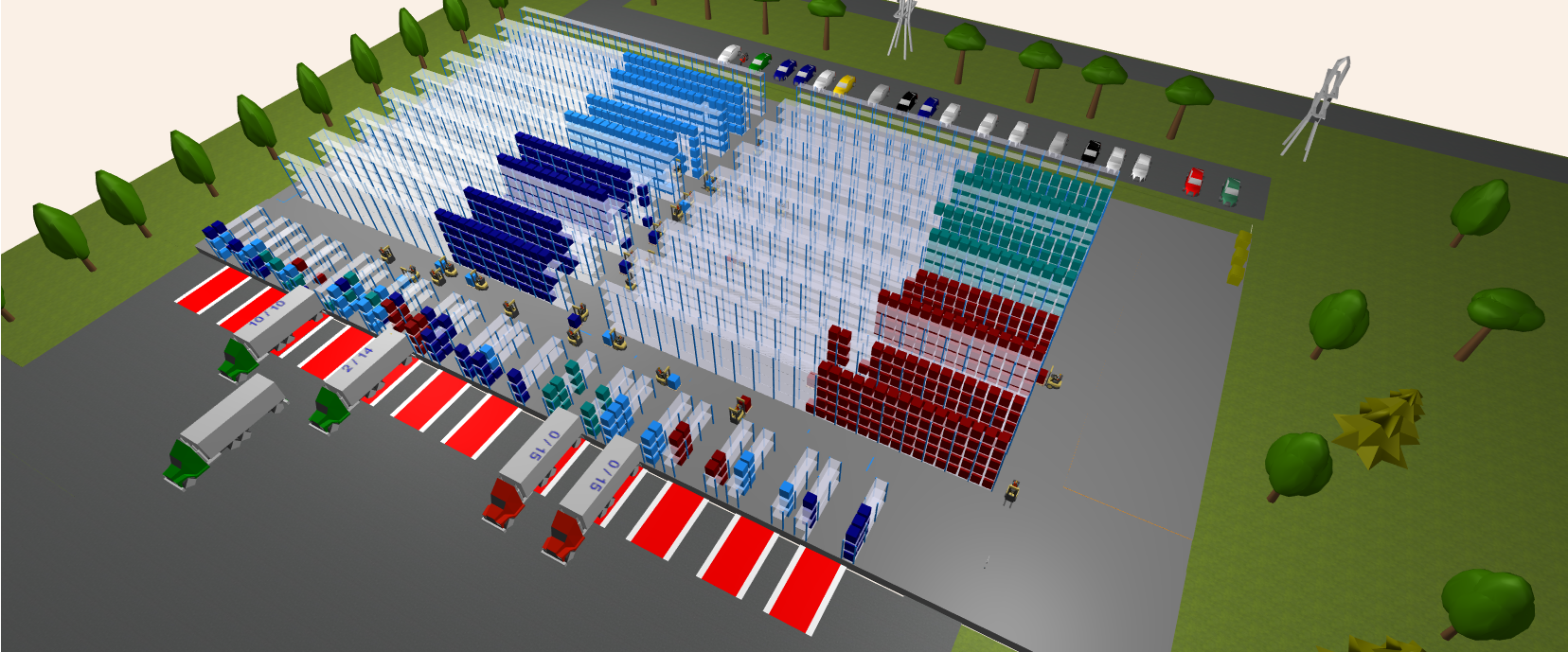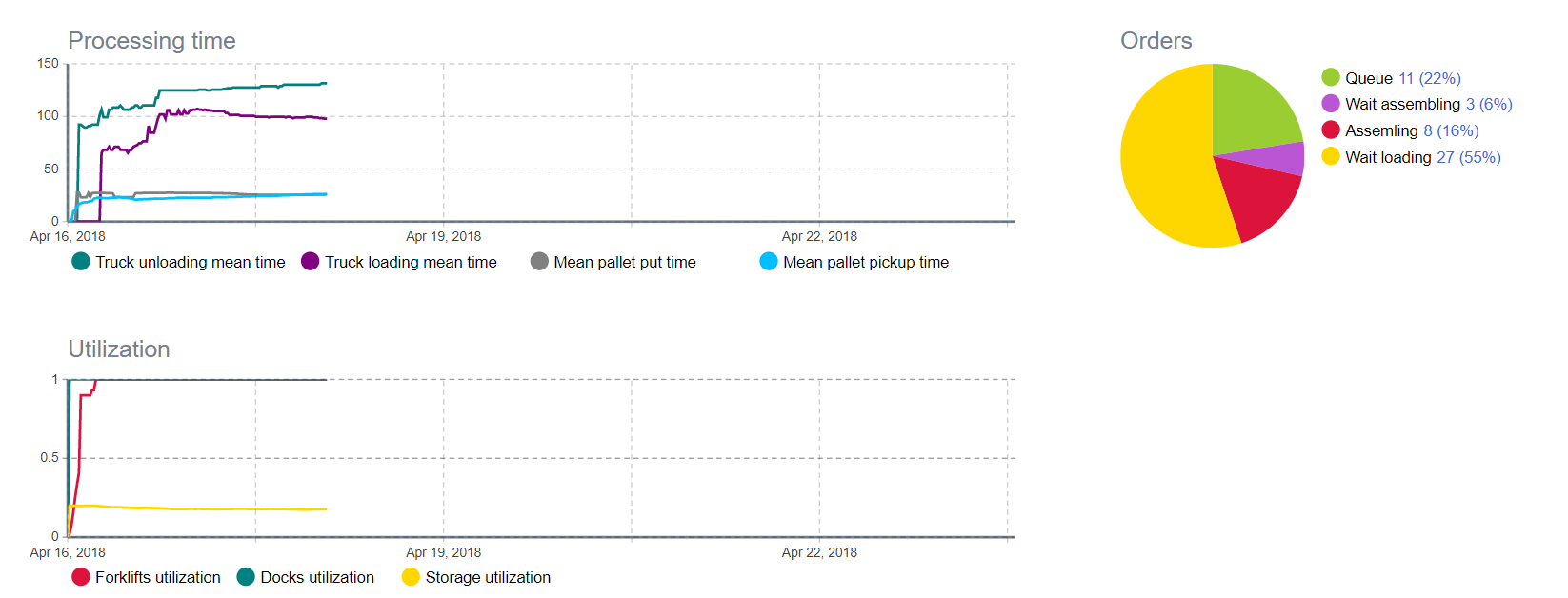Logistics Simulation
An increasing demand for faster deliveries causes a lot of pressure on logistics warehouses, to increase their speed and efficiency. The design and operation of these warehouses is something that deserves the greatest attention to meet the growing needs of the market. Creating scenarios in mathematical models to explore different possibilities within a logistic warehouse is possible, but it cannot represent the dynamics of that space. Simulation allows you to explore scenarios in real-world environments such as comparing layouts, picking technologies, or product allocation.
When designing a logistics warehouse, in most situations, common practices of the sector are used for the definition of the base layout, but each warehouse has its own particularities. The lack of detailed analysis and simulation, regarding the travel times of people and materials, can bring large costs and inefficiencies during the operation of the warehouse. Just think that if a warehouse can save 5 seconds for each picking, at the end of a day each worker can pick more 50 items, which results in a gain of 20 days after one year. For a warehouse with 30 people, we easily have a gain of 100,000€ annually.
The simulation can simulate in a real way the possibility of improved layout and packages flow. For this, there are several factors and parameters that must be considered, such as the positioning of each package on the shelf, the unexpected failures, and the reaction of the staff in the occurrence of conflicts between people and between people and equipment. With all this it is possible to define a layout that maximizes efficiency using simulation.


In the design and construction phase, it is difficult to know the operational costs that the warehouse will have during the operational phase and what are the warehouse bottlenecks. In traditional warehouses, the cost of labor remains one of the most important costs of a warehouse. In a design simulation, the integration of parameters such as people's speed, cycle times, people's behavior or the learning curve allows us to take productivity out of the warehouse and needs/costs with labor.
For all this, the simulation of logistics warehouses is an essential thing to be carried out, both in the design phase and in the operational phase, so KPI’s can be established, and its efficiency could be improved.


